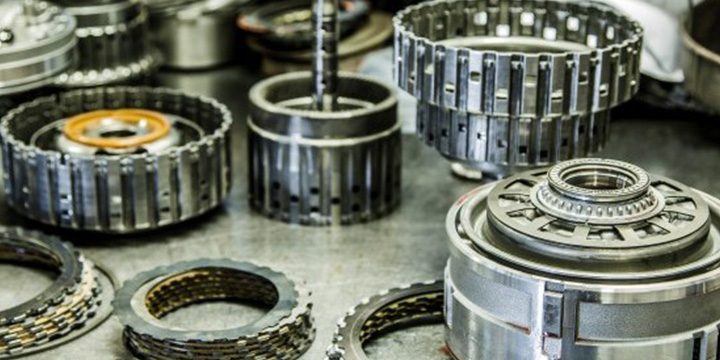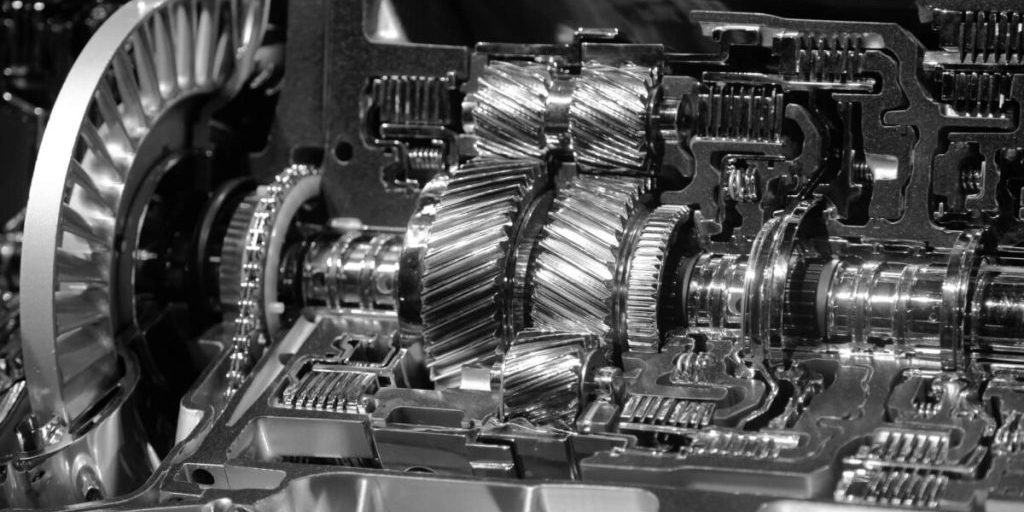The ultimate guide to DSG transmissions – What you need to know
September 17, 2020

Most drivers have heard of automatic and manual transmissions, but true enthusiasts know that there are many more options on the market when it comes to transmissions for vehicles.
The direct shift gearbox – also known as the DSG, DCT (dual clutch transmission) gearbox or twin-clutch system – is one specialty transmission type that offers loads of benefits for drivers, whether they’re operating a passenger car, sports car or motorcycle.
DSG transmission can be found on most Volkswagen models, but it’s also been gaining popularity with many other car companies such as Ford, Nissan, Volvo, BMW and more.
But what exactly is a DSG? If you’re new to the world of transmission types, no worries! We’ll help you learn more about the nature of a DSG transmission, how it compares to other common transmission types and the benefits and drawbacks so that you can decide if this car transmission type is right for your needs.
What is a DSG Transmission?
Born from the exciting world of motorsport, the DSG transmission was made most popular by Volkswagen. It has also become very popular with other car companies, although it goes by different names such as a DCT, PDK, and Powershift.
To put it simply, a DSG is a combination of an automatic transmission and a manual transmission. It gives you the simplicity and comfort of automatic with the control of a manual transmission – the best of both worlds! And the result? An unbelievable driving experience.
How Does a DSG Transmission Work?
The DSG transmission utilises a special DSG gearbox to create smooth, fast gear changes and an improved driving experience. Here’s how it works.
Each DSG gearbox houses two independent units that are connected to the engine – essentially like having two separate gearboxes in one car. The first clutch controls odd gears (1, 3, 5 and sometimes 7), while the second controls the evens (2, 4 and 6). While one gear is operating the vehicle, the second one is preselected and prepared for the next shift in speed. This creates a smooth and nearly seamless shifting experience.
The DSG gearbox is controlled with an electronic transmission control unit as well as a hydraulic unit. It uses sensors to analyse your speed, braking and other information to enhance your driving experience, and it also offers a manual option, allowing you to control gear shifts via a Tiptronic mode or paddles on your steering wheel.
How Does DSG Compare?
Now to answer one of the most important questions you probably have: how does a DSG transmission hold up to other popular transmission types?
DSG vs Automatic Transmission
As far as appearance goes, DSG and automatic cars look very similar inside the cab – there’s no foot clutch pedal to worry about nor any extra levers or systems that you’ll need to use in order to drive. But that’s where the similarities end.
Unlike an automatic vehicle, a car with DSG gives you the option of controlling your gear changes via a shift paddle or Tiptronic system. And because a DSG transmission system uses two clutches in place of a torque converter, not only is shifting smoother and faster, but the car can also be more fuel-efficient than the standard automatic.
DSG vs Standard Manual Transmission
Unlike a standard manual transmission, a DSG utilises two clutch systems rather than a single one. They’re arranged concentrically (one inside of the other) so that only one gear shift is visible.
Despite this similarity in appearance, DSG transmissions use more technology and mechanics than their manual counterparts. With an abundance of sensors, the DSG is able to think for itself and doesn’t need you to control its every move (unless you want to).
On a negative note, DSG systems are heavier than traditional manuals, meaning that they’re ever so slightly less fuel-efficient.
DSG vs CVT Transmission
A continuous variable transmission (or CVT) keeps your engine running at optimal speed by continuously choosing the right gear to keep you in the most fuel-efficient zone.
Like the DSG, a CVT system offers a smooth gear change with an uninterrupted flow of power to the engine. Unlike the DSG, however, a CVT system uses a series of pulleys and belts rather than a fixed number of gears. This means that the DSG won’t always be running at optimal momentum.
DSG vs ZF Transmission
The ZF transmission is designed for maximum fuel efficiency, so it definitely has an edge on the DSG in that regard. However, this means that vehicles with a ZF transmission will often be a bit slower when shifting.
To maximise fuel efficiency, the ZF is also designed to be a lightweight system, and it has the added bonus of being able to jump gears, which a DSG can’t do.
Pros of DSG Transmissions
Want to know all the best parts about a DSG system? Here they are.
- Fast Shifting Speeds: Thanks to the ability to preselect gears, the DSG system can execute some lightning-fast gear shifts, especially compared to automatic and standard manual transmissions.
- Fuel-Efficient: With no energy lost to the torque converter, the DSG proves to be more fuel-efficient than most automatic cars. In fact, the gearbox wastes so little power that it’s even more efficient than some manual transmissions as well.
- Smooth Driving: The DSG sensors know what you’re going to do next, making it a breeze to deliver the correct amount of power and torque so that your drive is smooth and enjoyable.
- Optional Control: Feel like putting the pedal to the metal? Take control with the paddle shifts or lever. Want to sit back and enjoy the ride? Let the car drive in automatic so that you don’t have to worry about shifting gears.
- More Accessible: With less risk of crunching gears and the addition of automatic options, the DSG is a great choice for drivers who are new to manual driving or who don’t enjoy using a clutch pedal.
Cons of DSG Transmissions
While we do love the DSG transmission, we have to admit it isn’t perfect. The system can be heavier than other gearboxes. Additionally, the intricate system is often a more expensive option and requires upkeep by professionals to ensure it works as it should, making it a bad choice for those who are really on a budget.
Cars with a DSG system are also often prone to jerking forward when going at slow speeds (such as in a parking lot) or when starting up, as the transmission needs to reengage after it’s rested.
How to Care For Your Direct Shift Gearbox Transmission
Just like any transmission, your DSG transmission requires a regular automatic servicing. Because this is one of the more expensive transmissions available, it’s not something you should DIY, and you definitely don’t want an inexperienced technician completing the job, either.
Here at Automatic Transmissions R Us, we offer high-quality service provided only by extremely knowledgeable and well-trained professionals so that you don’t have to worry about a thing. Contact the Auto Trans team today by sending through an enquiry, emailing info@autotransrus.com.au or giving us a call on (08) 9240 5449! We’ll have you back in your car in no time.
Read on...



